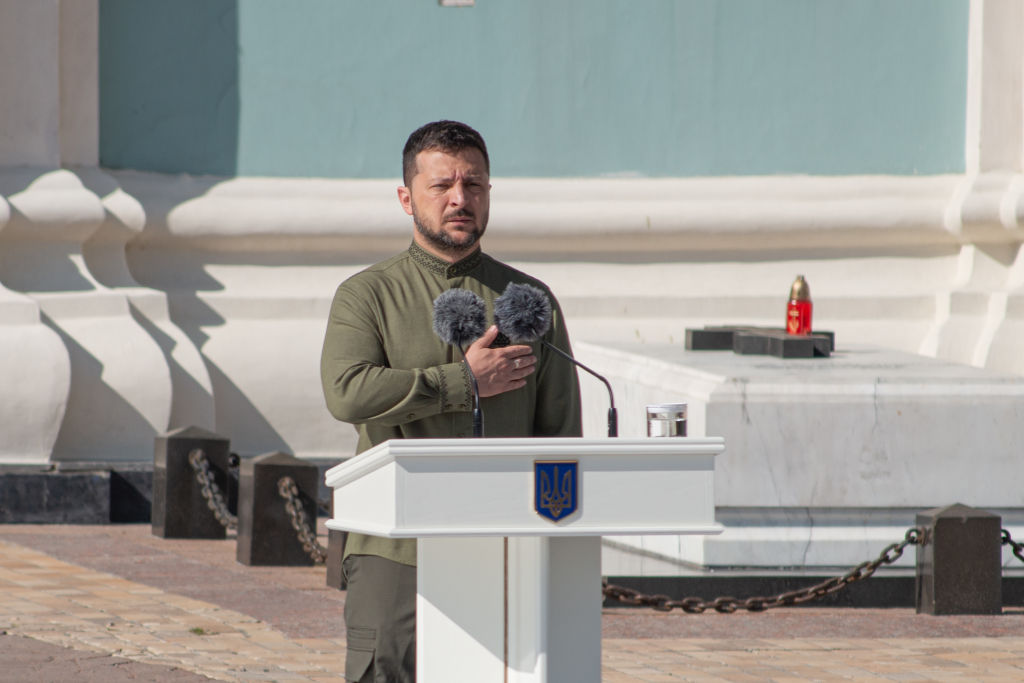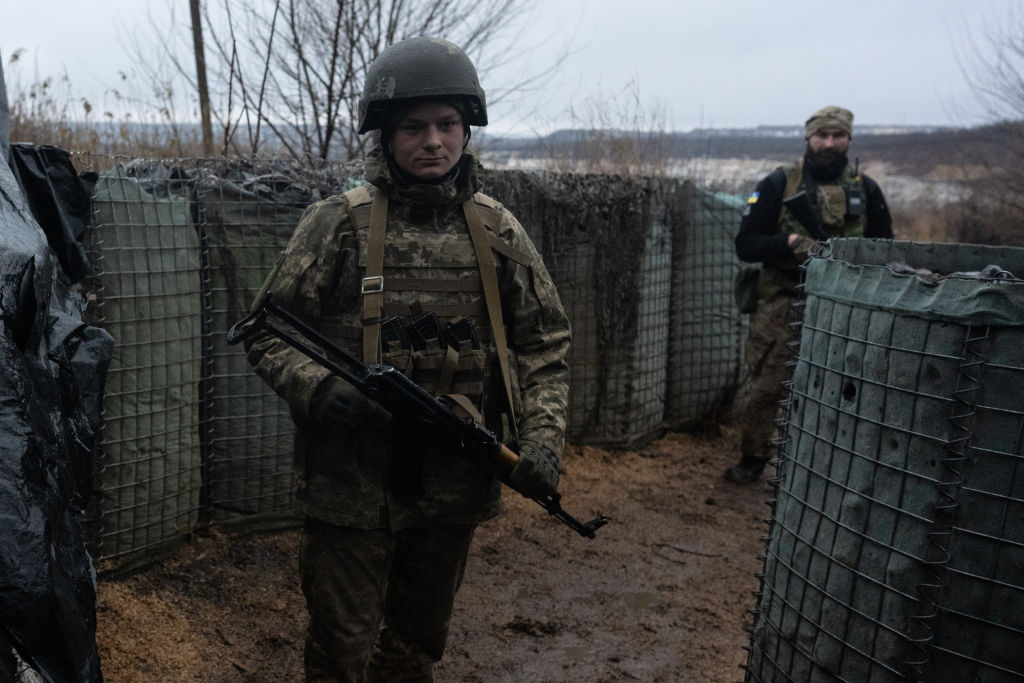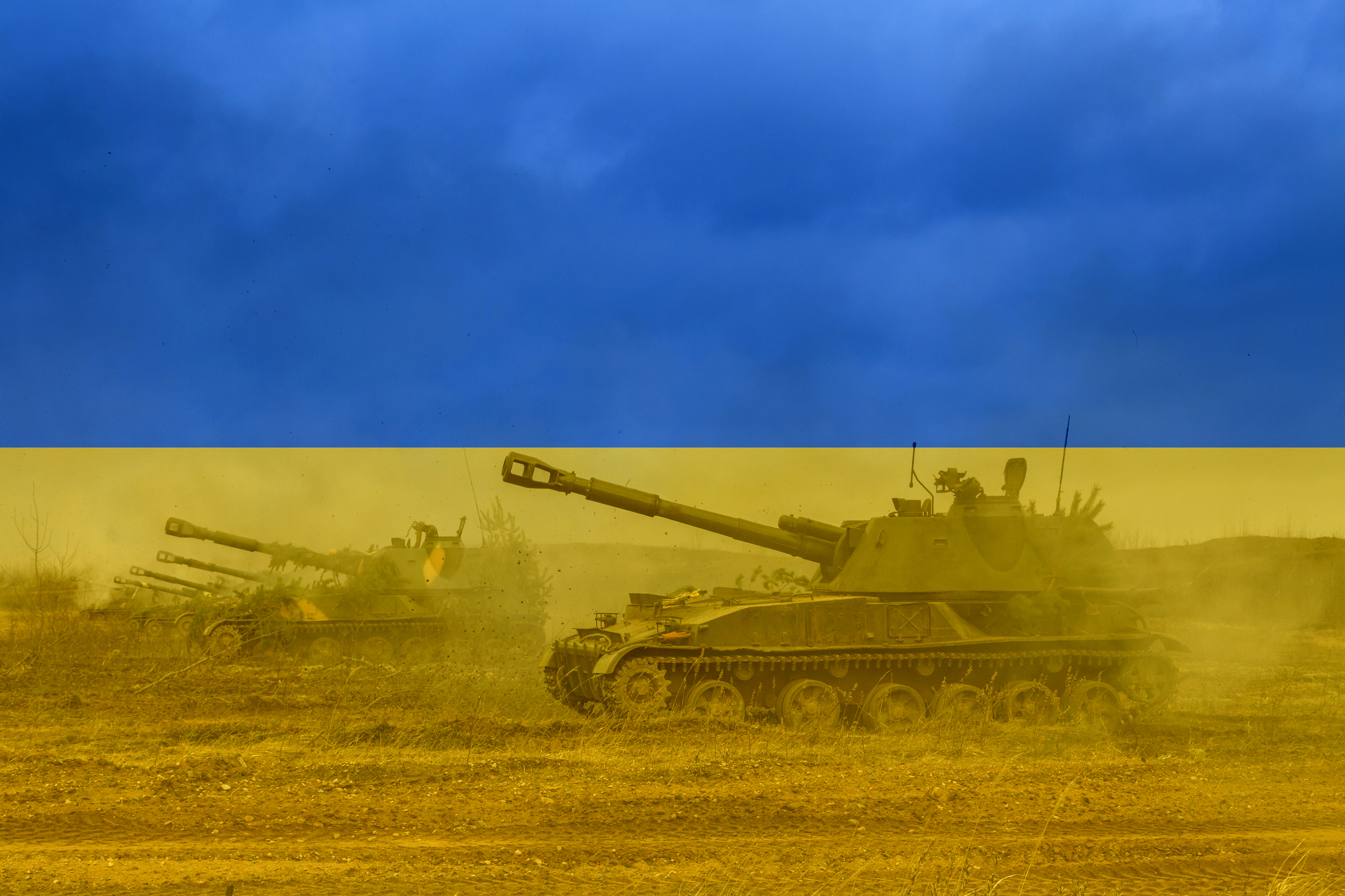War with Russia over its expansionist rumblings would be a disaster.
To The Last Ukrainian

The war is a disaster in every sense.
It was Vladimir Putin who initially noted that the West is willing to fight Russia to the last Ukrainian. Well, it looks like it’s finally happening—we’ve run out of Ukrainians, or at least we ran out of the ones willing to die for their country. Ukraine is running short of the young, fertile, and productive.
When Russia launched its full-scale invasion of its neighbor in February, 2022, the media lit up with stories of bumbling, murdering Russkies and heroic Ukrainians. The legend of the Ghost of Kyiv, the mystery pilot destroying legions of Russian fighter planes—eventually debunked as propaganda—raised expectations of a quick triumph of the underdog.
Many Ukrainians volunteered in these early days of war. Out of 6.1 million living abroad, some returned to defend their country. Martial law was swiftly imposed, barring able-bodied military age men from crossing the border. In the the rapidly aging post-Soviet nation, military age was defined as 18 to 60.
In a piece I wrote last year for The American Conservative, I collected draft-dodging stories from the back pages of Ukrainian media. I took care to avoid Russian sources that could be dismissed as propaganda. I also found what was then a very unusual New York Times item that described popular Telegram channels that alert subscribers of real time locations of conscription officers issuing summons on the streets of Ukrainian cities.
An interesting twist on the real time draft-dodging tools was a March 2023 post on a censored and hyper patriotic Kharkiv Live channel recommending this type of group chat to over a half a million of its subscribers. Vocally expressed nationalistic sentiments, as it turned out, don’t necessarily translate into willingness to take up arms — or even support of mass mobilization.
A recent survey found that just 6 percent of respondents in Kharkov are planning to enlist if the situation deteriorates. This number is the lowest in the country, but other regions are not far behind. Kiev, for instance, is at 12 percent. Because this is a wartime poll conducted in a country under martial law, I’d take its findings with a grain of salt.
A few weeks ago, Vladimir Zelensky acknowledged the problem of corruption in the armed forces and fired all regional recruitment chiefs. He intends to replace them with “warriors who have gone through the front or who cannot be in the trenches because they have lost their health, lost their limbs, but have retained their dignity and have no cynicism.” It’s an agreeable sentiment, but I strongly suspect that the returning fighters are quite cynical in many regards, especially when it comes to the way business is conducted in their country. Last week’s resignation of the Defence Minister Oleksii Reznikov at the time of widely publicized military corruption scandals should be a clue that the problem is larger than the recruitment chiefs. Zelensky’s official explanation that the country is looking for “new approaches” amounts to an admission of failure.
Ukraine is now insistent on drafting everyone. Since a large number of draft-eligible men fled abroad — 163,287 live in Germany alone — they need to be extradited. Poland already began the process of deporting Ukrainians back home to fill the trenches. Moreover, the Defense Ministry approved new drafting rules under which men suffering from disabilities ranging from slow progressing nervous system disorders to hemorrhagic conditions are now eligible to be drafted. Morale and effectiveness of this kind of army is questionable.
This late in the war, Ukrainians are unlikely to change their mind about marching into the meat grinder. Ukraine does not publicize its casualties, but multiple videos circulating on social media show sprawling fresh graves under the national banners. The recent official U.S. estimate is 70,000 dead and 150,000 to 200,000 wounded out of 5.5 million military age men—more dead in 18 months than the U.S. lost in the Vietnam War. According to German medical supplier Ottobock, which makes prosthetics, the number of amputees now stands at up to 50,000. With characteristic German understatement Ottobock adds that the real figure is probably higher because it takes time to process cases. Meantime, Ukraine is preparing for 1.5 million disabled.
The volunteers who answered the call early in the war were likely ideological and educated. Obituaries commemorated the flower of Ukraine—an activist, an actor, an astrophysicist. Men escaping the draft are wealthy and connected, educated, and living in large population centers. The ones dragged into combat now are poor and rural.
The greatest loss to the country has been the departure of women and children. After the flight of refugees and the annexation of southeastern regions, Ukraine’s population dropped from 42 to about 30 million. Women from Kiev and Kharkov, the largest and most developed Ukrainian cities, are most likely to have left the country. These women are young and middle aged, and have college degrees and children. According to a report in the Italian newspaper Carrier De La Serra, educated refugees were able to find employment abroad and their children study in local languages. Some families crumble. It’s doubtful that those already growing roots will return after the war. More likely they will be joined by their equally well-educated husbands.
Given Ukraine’s very low pre-war birth rate, the loss of millions of children and women of reproductive age can be catastrophic. So is the damage done to the Ukrainian village and cultural heritage, both Russian and Ukrainian.
Ukraine’s greatest accomplishment in the war so far is the methodical erasure of every visible reference to Russian culture from its landscape — starting with monuments to the foundational Russian poet Alexander Pushkin and going down the list of literary and cultural figures.
Ukraine has a storied martial tradition—the Cossack valor is legendary. Many of those drafted went into the meat grinder putting their faith into providence alone. But today’s Ukraine is urban; the nomadic steppe dwellers are gone and so are their large families. Too many only sons perished in the trenches and further losses are hardly acceptable to ordinary people. A positive outcome for Ukraine is hard to imagine even in the unlikely scenario that Russia loses on the battlefield.
The American Mind presents a range of perspectives. Views are writers’ own and do not necessarily represent those of The Claremont Institute.
The American Mind is a publication of the Claremont Institute, a non-profit 501(c)(3) organization, dedicated to restoring the principles of the American Founding to their rightful, preeminent authority in our national life. Interested in supporting our work? Gifts to the Claremont Institute are tax-deductible.
The drumbeat for war pounds on with virtually no official opposition.
Mike Pence represents a stubborn and persistent neoconservative tendency that prioritizes globalist concerns.



